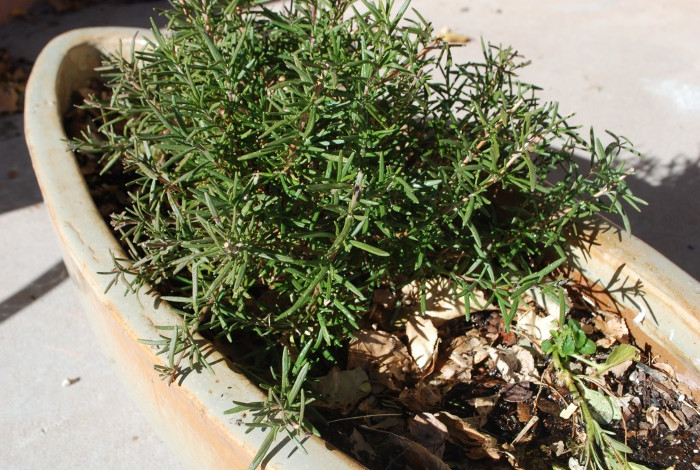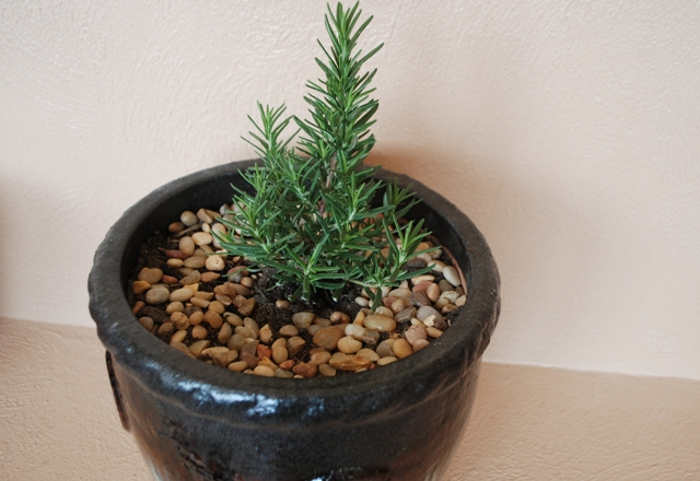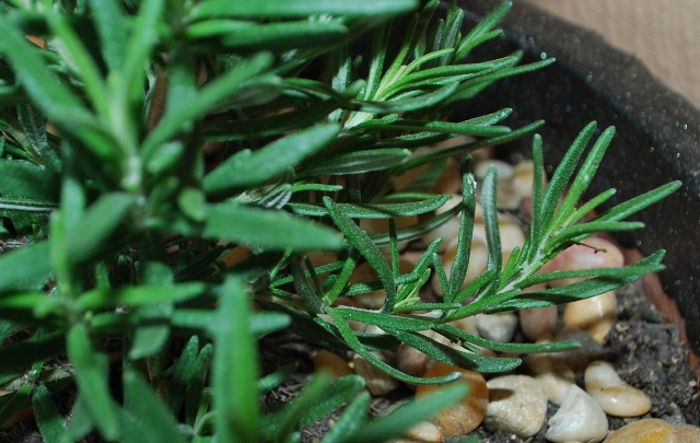Rosemary is a wonderful Mediterranean plant to grow in containers. You can keep it in a sunny location all year and leave it relatively close to your kitchen to snip stems for cooking. By leaving the pot close to a south-facing wall in winter, the plant, which is reliably hardy in zone 8, will receive some extra warmth. Containers also allow the plant to be moved to a protected spot in winter. This is especially important if the plant is not fully hardy in your climate.

Established rosemary in pot that wintered over. I took a few cuttings, but it still has outgrown this narrow container and needs transplanting.
Cutting some rosemary stems for culinary use helps keep the plant compact enough for container living. However, rosemary develops a large, fibrous root system and typically will need to be repotted every year to allow healthy, continuous growth. Transplant the rosemary to a new container when the plant becomes too large or the roots start to emerge from the drainage holes.
Rosemary Care In Pots
Rosemary is best grown from a nursery transplant or cutting, not from seed. When preparing your container, be sure it has at least one hole for drainage, and use well-draining soil that’s slightly alkaline and not too fertile. A sandy mix or potting soil with extra perlite is ideal. You won’t need to fertilize your rosemary, but adding an organic fertilizer when transplanting or once a season shouldn’t harm the plant.
Keep the rosemary as warm as you can in winter if you live at the lower end of its growing range. Rosemary is also sensitive to cold, wet weather and should be moved away from downspouts and areas with season flooding. To be safe, you can bring the container inside after the first frost. Place it in a sunny location, preferably a south-facing window with direct sunlight.

New rosemary plant in a container, ready to head outside for full sun exposure.
Rosemary is drought tolerant and does not like wet feet. Make sure not to overwater it, especially when temperatures drop or it is indoors. Wait until the top 2 inches of soil are dry before you water. In the summer, container plants should be placed in full sun and may need supplemental watering every few days during intense heat.
Benefits Of Growing Rosemary In Pots
Use potted rosemary to decorate a patio, deck or entryway. The evergreen foliage is attractive year-round and pairs well with other water-wise herbs like lavender, sage, and thyme. The tiny bluish-lavender flowers are adored by bees and provide a touch of the Mediterranean to an outdoor space.
The flavorful leaves of rosemary have many uses and can be consumed fresh or cooked in recipes. The oil from rosemary leaves is said to help with heartburn and other digestive problems. The oil may also help soothe skin irritated by eczema. Of course, it’s widely used in perfumes, sachets and lotions. The flowers are also edible and contain higher levels of aromatic oils than the leaves.

The only thing better than looking at a rosemary plant is running your finger over the stems, or cutting some for use in your kitchen!
 |
Author Teresa Odle - Published 12-10-2020 |
